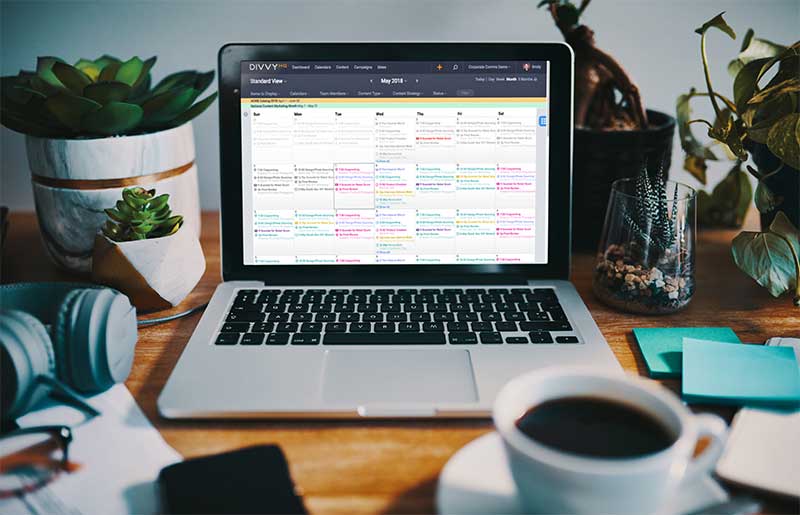Decades from now, marketers will still be referring back to Bill Gates’ quote “Content is king,” and for good reason: Content is adaptable, engaging, and all-around crucial in every area of business.
Since email is a channel that attracts 4 billion daily users, investing in this type of content instantly opens up the door to more audience outreach and retention. Not to mention 81% of marketers have made email newsletters their most used method of content marketing.
Image Source: Content Marketing Institute
The reason?
As an email marketer, you can leverage your existing content strategy and persona data to make decisions about 1) what type of newsletter will be most effective, 2) what content will be most relevant, and 3) how to get more people to opt-in for your newsletter.
When you break it down, email marketing is an extension of your content strategy. By following through with a few specific steps, you can adapt your content strategy to make top-performing newsletter content that your audience will want to read as soon as it lands in their inbox.
This guide will walk you through each of those steps. So without further ado, let’s start with the first and arguably most impactful one: Audit your content strategy.
Audit Your Current Content Strategy
Content comes in many forms (i.e., social media videos, landing pages, blog posts, and the list goes on). Before you start creating your next e-newsletter, take the time to run an audit on your content strategy.
This way you can mull over questions like: What are your content goals? What are your audience personas? How often are you publishing content, and how are you representing your brand?
If you’ve been working in content marketing for any amount of time, odds are you’ve invested in processes like SEO and Voice-of-Customer research (i.e. surveys, focus groups, etc.). By analyzing the data you’ve collected so far, you’ll be able to:
- Identify any blindspots or flaws in your current content strategy.
- Conduct more persona research if needed.
- Make relevant content for your audience.
- Maintain a unified brand voice and design.
- Market your newsletter on the right channels.
Ultimately, it’s important to reflect on what has and hasn’t worked in the past so that you can create newsletter content that is successful long-term. Running an audit on your website, email, and other channels will give you the tools to improve your content creation going forward.
Brainstorm and Plan Your Newsletter Content
Once you’ve audited all existing content, you can start ideating on newsletter content.
The first step in this process is to decide what type of newsletter you want to create and who the target audience is.
Maybe you want to make exclusive content for long-time clients or subscribers. Or maybe your goal is to cultivate strong relationships with new leads, and a newsletter is a great way to share information about your brand.
Personalization is the #1 tactic for increasing engagement rates via email, so as soon as you decide who your newsletter is for, personalize the copy and visual design so that it appeals to your target audience.
Some of the best ways to personalize newsletter content is to include the recipient’s first name in the email subject lines, use images that represent their identity in some way, and borrow specific phrases from Voice-of-Customer data.
For example, if the leads you interviewed said they are looking for a company that is “eco-friendly,” “innovative,” and “customer-focused,” this is exactly the language you should use in your newsletter copy.
When someone reads your newsletter, they should believe you curated the content specifically for them.
Promote Your Newsletter on Multiple Content Channels
After auditing your content and finalizing the concept for your newsletter, it’s time to spread the word and encourage your audience to opt-in. (Because, as you know, they won’t just pop up on your subscribed list by accident.)
The goal here is to get as many qualified readers to sign up as possible. To meet this goal, you can promote your newsletter on your website, social media, and other content channels that your audience frequents.
This could take shape in many different ways: You could embed a lead magnet on a landing page to get contact details and sign ups. You could promote the newsletter on Instagram or Facebook and link to a signup page.
Whatever approach you take, the desired end result is the same: People engage and convert (i.e. sign up for the newsletter).
Run A/B Tests on Copy and Imagery
People opt in for your newsletter because the content appeals to them, but there’s always room to make that content better. As you publish newsletter content on a consistent basis, one last step that every email marketer should take is to run A/B tests.
By A/B testing alternate subject lines, designs, and CTAs, you can compare email performance and know exactly what your audience responds to. This kind of testing can be used for different types of content in the newsletter, but it’s important to test one or two variables at a time.
That way, you can get the most accurate and unbiased results after each email goes out.
It’s inevitable that new content trends will come and go, but you’ll be able to make the right newsletter content for the right audience when you evolve your content strategy — and follow through with the steps in this guide.
Going forward, you’ll have all of the data and insights you need to make better newsletter content again and again.
For more great tips, tricks, and how-tos, subscribe to the DivvyHQ blog today!

